When Steve Shunk, naturalist and author of the Peterson Reference Guide to Woodpeckers of North America, joined Naturalist Journeys, he brought expertise and familiarity with Oregon and the Pacific Northwest. Steve hails from the Bend/Sisters area and his signature tour showcases the best of Central Oregon’s Woodpecker Wonderland. Now, we are excited to offer a brand new Oregon photo seminar in Steve’s stomping grounds. Designed for beginning to intermediate photographers, this intensive woodpecker experience elevates the artistry of your images as you spend four full days photographing up to 11 different woodpecker species, along with other specialty birds and sweeping Cascade Mountain vistas!
Joining Steve to lead this photography seminar, we are pleased to introduce you to award-winning wildlife photographer and author Kirsten Hines. Based in Miami, Florida, Kirsten relies on her biology background to capture intimate images of birds and other animals from around the world. Her writing and photography have appeared in numerous exhibitions and publications. Her six books on Florida’s nature and history include three on south Florida’s national parks and the bird-themed books Attracting Birds to South Florida Gardens and Birds of Fairchild. With 25 years of experience leading nature and photography trips and workshops, she assists you both in the field and with post-processing techniques to elevate the quality and aesthetics of your images.
The tour starts and ends in Redmond, Oregon, from which we drive a short distance to the small tourist town of Sisters. Throughout the trip we are surrounded by the region’s impressive Cascade volcanoes and immersed in a broad diversity of habitats—from aspen groves to burned conifer forest—and we enjoy comfortable accommodations and northwestern cuisine.
Our daily itinerary takes us on a quest to photograph all of the region’s 11 nesting woodpecker species. We wander through recently burned forests in search of Three-toed and Black-backed Woodpeckers. We enjoy mature cottonwood and aspen galleries in search of three different sapsuckers. And, we visit older burns and mature mixed-conifer forest for Lewis's and Pileated Woodpeckers, respectively. Each day we encounter ponderosa pine forest, home to an abundance of White-headed Woodpeckers. Hairy and Downy Woodpeckers and Northern Flicker are widespread in the region. Additionally, each day includes quality time photographing woodpeckers at their nest sites, as well as reviewing photos and workshopping each afternoon or evening.




Tour Highlights
- Share the combined experience of two seasoned naturalists: Steve brings intimate knowledge and experience with woodpeckers and the region and Kirsten with world-class photography and an ecological approach to nature interpretation
- Enjoy a high-quality guided experience within a small group, ideally sized for photo instruction
- Observe and document breeding behavior for up to 11 different woodpeckers, representing half of the 22 North American species
- Explore a wide diversity of scenic habitats, with minimal driving and optimal field time
- Settle into one accommodation for the entire tour
- Enjoy quality northwestern cuisine, including many local beers and wines




Trip Itinerary
Itineraries are guidelines; variations in itinerary may occur to account for weather, road conditions, closures, etc. and to maximize your experience.
Tues., June 11 : Arrive in Redmond, Oregon | Drive to Sisters
Please plan to arrive at the Redmond Municipal Airport (RDM) by 2:00 PM. We have a 30-minute drive to Sisters, with plenty of time to settle into our rooms before our first afternoon outing. We spend a couple of hours this afternoon discussing photographic techniques and putting them to use in the field in preparation for the next few days. We get to know each other tonight over our first dinner together in Sisters.
Accommodations at the Best Western Ponderosa Lodge, Sisters (D)
Wed., June 12 – Sat., June 15: Photographing Woodpecker Wonderland!
Our explorations in Central Oregon’s Woodpecker Wonderland take us into a broad array of habitats. In addition to woodpeckers, we also take some time to photograph other regional specialty birds as well as some of the mountain scenery surrounding us. Each day follows a similar routine:
• 6:00 AM – Hotel or bakery breakfast
• 6:30 AM – Head into the field
• 11:30 AM – Break for lunch and photo processing time
• 2:30 PM. – Photo review and discussion
• 3:30 PM – Back into the field
• 6:30 PM – Break before dinner
• 7:30 PM – Dinner
• 9:00 PM – Return to hotel
Depending on our success at finding certain species, we ought to have some flexibility in the schedule for our last day or two. Meals are a combination of favorite local restaurants and some picnic lunches.
Accommodations at the Best Western Ponderosa Lodge, Sisters (B,L,D)
Sun., June 16 : Morning Birding | Departures from Redmond
On our last day in central Oregon, we enjoy one final morning of photography and some casual birding before heading to Redmond Municipal Airport. We plan to arrive back to the airport by 11:00 AM; please plan your flights out after 1:00 PM (B)
Cost of the Journey
Cost of the Journey is $4990 DBL / $5985 SGL, based on double occupancy, per person. The tour price includes airport transfers, 5 nights’ accommodations, all meals from dinner Day One through breakfast Day 6, professional guide services, park and preserve entrance fees, and miscellaneous program expenses. Cost of the journey does not include airfare to and from your home to Redmond, Oregon or items of a personal nature, such as drinks from the bar, telephone, and local guide gratuities (at your discretion, we will give some guidelines).
Travel Details
Please plan to make air travel plans only after the minimum group size has been met. We will send you a confirmation email as soon as the trip has been confirmed.
Arrival and Departure Airport: Redmond Municipal Airport (RDM)
Arrival Details: Plan flights to arrive June 11, 2024, no later than 2:00 PM.
Departure Details: Plan flights to depart June 16, 2024 after 1:00 PM.
Travel Tips: If you want to arrive early and rest up from your travels, we recommend the Comfort Suites Redmond Airport. You can book this online or call (541) 504-8900 to make a reservation. The hotel offers free airport transportation, and they are within walking distance to a couple of restaurants.
If you want to explore the area more, Bend, just down the road from the Redmond Airport, is a fun city with many things to do. There are plenty of hotels in Bend, but some in the downtown area we recommend are McMenamins Old St. Francis School Hotel and The Oxford Hotel. The downtown area has many shops, restaurants, and craft breweries. You can also take a walk along the Deschutes River. The High Desert Museum, just 5 minutes south of Bend, has exhibits on the people, culture, and resources of the high desert region. They even have a Bird of Prey Center where you can get up close views of owls, hawks, eagles, and falcons. If you’re fascinated by geology, then visit the Newberry National Volcanic Monument to see ancient lava flows and learn more about the spectacular geologic features of the area. Other great attractions in the area include Tumalo Falls, a nearly 100-foot-tall waterfall, and Pilot Butte, which you can drive up and have great views of surrounding mountains on a clear day. Taxis and Uber are available in Bend, but it’s easier to get around if you have a rental car.
Items of Note
Photography & Field Conditions
During this photography seminar, you have unprecedented opportunities to photograph an incredible array of nesting woodpeckers with both field and post-processing instruction to ensure you have the tools you need to create images you are proud of not only on this trip but into the future. There is ample time in the woods to practice a variety of techniques, including quality time at multiple nest sites to experiment with elements such as lighting, angle, and framing. Field instruction is combined with indoor discussions of workflow, compositional elements, post-processing techniques using Adobe’s Lightroom, and hands-on practice through photo review to improve the overall artistry and effectiveness of your imagery.
We travel in two minivans, with seating for three participants each and ample room for each day’s gear and clothing. Expect cool to cold mornings and warm to hot afternoons, though we reserve the hottest part of the day for indoor photo processing and review. We could experience inclement weather, so please be prepared for a wide array of conditions. Ground conditions may be dusty and we may spend considerable time standing on open sunny slopes.
A tripod is recommended for nest photography and a laptop for photo processing and review sessions. You may also wish to bring a USB flash drive for transferring your images to the computer that we use for reviewing each other’s work on a projection screen. Please plan to bring a telephoto lens with focal length of at least 300 mm and a comfortable pack to carry your gear on short, moderate hikes through potentially uneven terrain. For those interested in capturing environmental portraits of the birds and/or landscapes, please also bring a mid- (24-105mm) to wide-angle lens (35mm or less)
Browse below for trip reports and species lists from past versions of this and other tours from this destination.
Oregon
- May 2021
- July 2021 (Birds & Botany)
- July 2021
- May 2022
- July 2022
- May 2023
- June 2023 (Photography Seminar)
- July 2023 (Cascade Mountain Lodges)
-
Kirsten Hines

Kirsten’s love of nature blossomed with early childhood explorations of emerald rainforests, sea star-filled tidepools, and wildflower-strewn mountains in Washington State. This paired with a love for travel when her family translocated to the Philippines where she lived from ages 8-18. Kirsten’s natural history explorations of the world expanded in college, graduate school and beyond as she studied Augur buzzards in Kenya, magnificent frigatebirds in the Galapagos Islands, poison-dart frogs in Costa Rica, rock iguanas in the Bahamas, kangaroos, bowerbirds, and fairy wrens in Australia, and myriad plants and animals in Florida where she worked as a biologist until a camera tweaked the trajectory of her career. Seven continents and 56 countries later, Kirsten now bases out of Florida and Maryland as a wildlife photographer, writer, speaker, nature guide, photography instructor, and conservationist.
Kirsten’s writing and photography have appeared in numerous online and print publications, including six of her own books on Florida’s nature and history, starting with the award-winning gardening reference Attracting Birds to South Florida Gardens and most recently Everglades National Park. Her upcoming photo-illustrated books include the coffee-table book Wild Florida: The Animals of the Sunshine State and the field guide Birds of Florida. Kirsten’s images have also been featured in photography showcases, public art programs, and in solo and juried group exhibitions. With over 20 years of experience leading nature and photography trips and workshops, Kirsten’s goal is to inspire enthusiasm for the natural world among diverse audiences. She is a founding member of Phoebes Birding, which connects women through nature, member of the IUCN Iguana Specialist Group and North American Nature Photography Association, and a board member of Tropical Audubon Society and Audubon Florida.
Other trips with Kirsten Hines
-
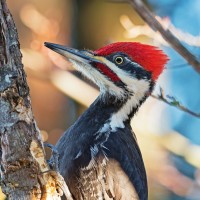 Oregon's Malheur NWR & Woodpecker WonderlandMay 31 - June 9, 2024
Oregon's Malheur NWR & Woodpecker WonderlandMay 31 - June 9, 2024
-
-
Steve Shunk
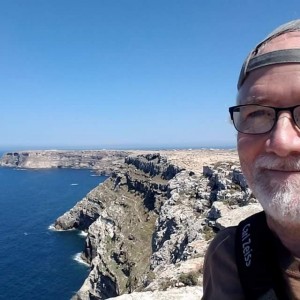
Steve Shunk started birding in the San Francisco Bay Area in 1989, and he moved to central Oregon’s ‘Woodpecker Wonderland’ in 1997, where 11 woodpecker species breed annually. This phenomenon led to a 20-year obsession studying this charismatic family of birds. Steve founded the region’s woodpecker festival in 2008, and his Peterson Reference Guide to Woodpeckers of North America was published in 2016. He has fed leeches (his own blood) in Malaysian Borneo, and he has watched Spotless Starlings swarming around the Greek ruins of Sicily. Steve’s Alaska adventures have taken him from Ketchikan to Barrow and St. Paul Island. One of his favorite destinations takes him to see ‘eastern’ warblers breeding across the boreal forest of Alberta, but recent adventures have led him to favor the cushion plants and condors of the Peruvian high Andes. Steve speaks at bird festivals across North America, and he returns annually to speak and guide at the Vallarta Bird Festival in far-western Jalisco, Mexico. Steve joined Naturalist Journeys earlier this year, and we are excited to have him on the schedule for 2021 and beyond.
Steve’s work as a field biologist has taken him from the Coast Range of Oregon to California’s Sierra Nevada. Most recently, he conducted point-count and woodpecker surveys for a study in the Central Oregon Cascades. Steve co-founded the East Cascades Bird Conservancy (now East Cascades Audubon), and served as its first president. He also co-founded the Oregon Birding Trails Program and coordinated its flagship project, the Oregon Cascades Birding Trail. When Steve is not traveling the world for tours and lectures, he can be found writing, skiing, hiking, and watching woodpeckers at home in lovely Sisters, Oregon.Other trips with Steve Shunk
-
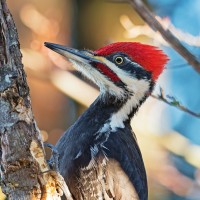 Oregon's Malheur NWR & Woodpecker WonderlandMay 20 - 29, 2024
Oregon's Malheur NWR & Woodpecker WonderlandMay 20 - 29, 2024 -
 Oregon's Malheur NWR & Woodpecker WonderlandMay 31 - June 9, 2024
Oregon's Malheur NWR & Woodpecker WonderlandMay 31 - June 9, 2024 -
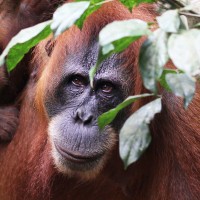 Wild Borneo: Endemic Birding & NatureOctober 2 - 16, 2024
Wild Borneo: Endemic Birding & NatureOctober 2 - 16, 2024 -
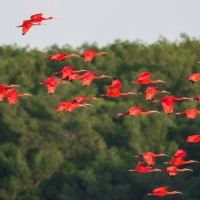 Christmas Week at the AWNCDecember 21 - 27, 2024, w/Tobago extension
Christmas Week at the AWNCDecember 21 - 27, 2024, w/Tobago extension -
 Pacific Mexico & Rancho Primavera A Winter Escape!January 19 - 25, 2025
Pacific Mexico & Rancho Primavera A Winter Escape!January 19 - 25, 2025 -
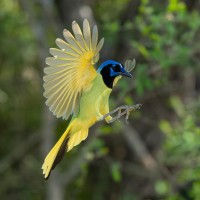 South Texas Birding & NatureFebruary 12 - 20, 2025
South Texas Birding & NatureFebruary 12 - 20, 2025 -
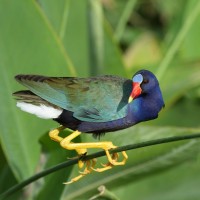 Texas Coast & Big ThicketApril 16 - 24, 2025
Texas Coast & Big ThicketApril 16 - 24, 2025 -
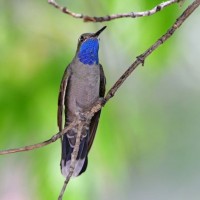 Southeast ArizonaApril 28 - May 7, 2025
Southeast ArizonaApril 28 - May 7, 2025 -
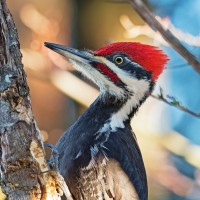 Oregon's Malheur NWR & Woodpecker WonderlandMay 16 - 25, 2025
Oregon's Malheur NWR & Woodpecker WonderlandMay 16 - 25, 2025
-
Essential Information +
Packing List +
Suggested Reading List +
Useful Links +
Photo credits: Banners: Red-breasted Sapsucker, Steve Shunk; Lewis's Woodpecker (with currants!), Steve Shunk; Malheur National Wildlife Refuge, Steve Wolfe; White-headed Woodpecker, Steve Shunk; Horned Lark, Steve Shunk; Hermit Warbler, Steve Shunk; Pileated Woodpecker, Carlos Sanchez; Old St. Francis School Hotel, courtesy of McMenamins; Pileated Woodpecker, by Bill Pennell on Unsplash; California Scrub Jay, Greg Smith; White-headed Woodpecker, Steve Wolfe; Bald Eagle, Greg Smith; Bullock's Oriole, Homer Gardin; Lewis's Woodpecker, Steve Wolfe; Old St. Francis School Hotel, courtesy of McMenamins; Malheur NWR, Steve Wolfe; Western Tanager, Barb Stone; Williamson's Sapsucker, Steve Shunk; Lewis's Woodpecker, Steve Shunk; Flowers, Steve Shunk; Photo Gallery: Red-breasted Sapsucker, Steve Shunk; Lewis's Woodpecker, Steve Shunk; Black-backed Woodpecker, Steve Shunk; American Bittern displaying, Steve Shunk; Pileated Woodpecker, Sandy Sorkin; Sora, Steve Shunk; Yellow-headed Blackbird, Naturalist Journeys Stock; Lazuli Bunting, Steve Shunk; Magnolia Warbler, Steve Shunk; Band-tailed Pigeon, Greg Smith; Black Oystercatcher, Steve Wolfe; Black-headed Grosbeak, Homer Gardin; Calliope Hummingbird, Naturalist Journeys Stock; Common Nighthawk, Naturalist Journeys Stock; Gray-crowned Rosy-Finch, ALAN SCHMIERER public domain via Flickr.




















